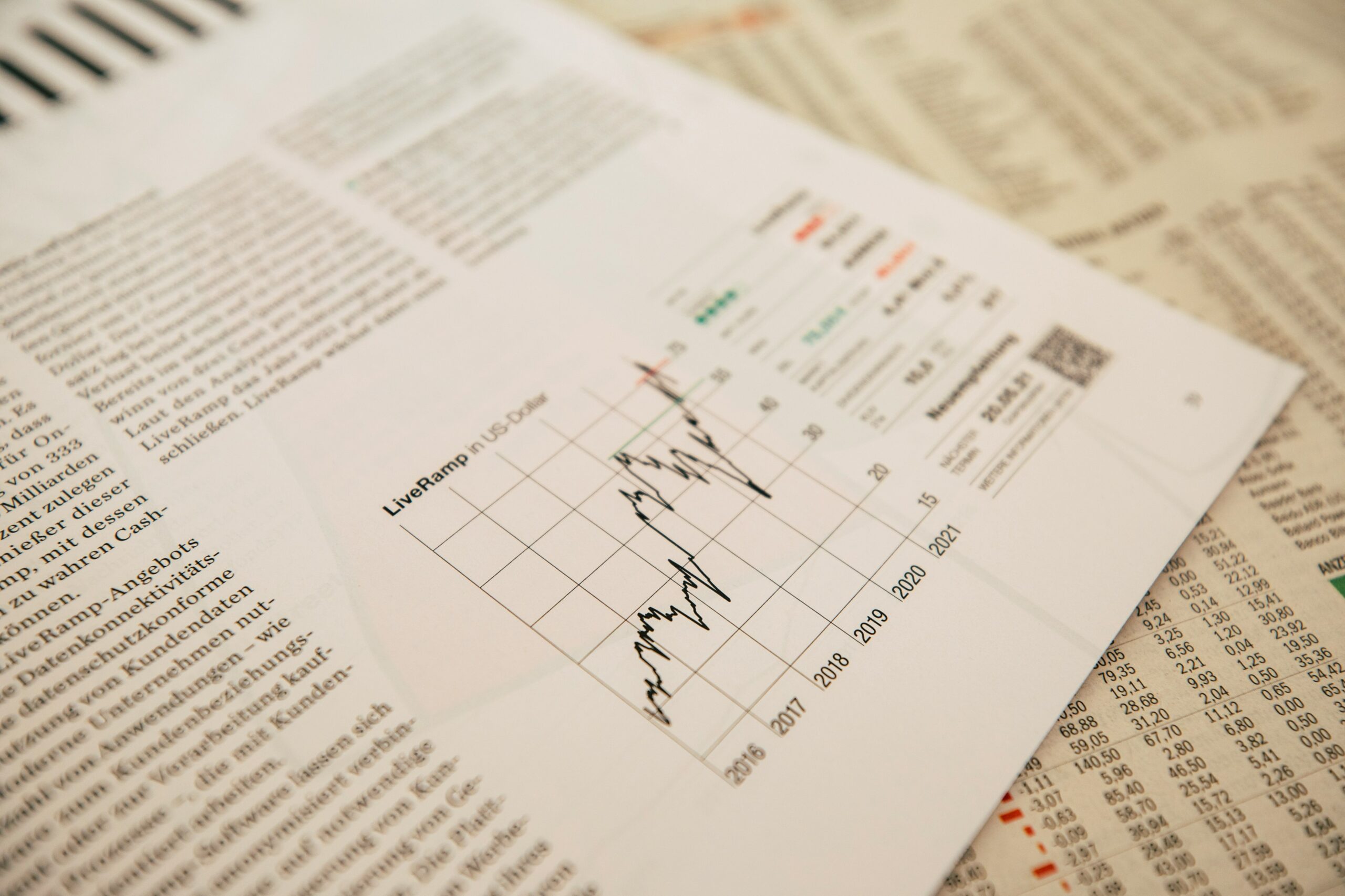Your cart is currently empty!

Understanding the Impact of Rising Interest Rates on the Economy and Personal Finance
Introduction to Interest Rates
Interest rates are a fundamental aspect of the financial system, influencing various economic activities and personal finance decisions. At their core, interest rates represent the cost of borrowing money, typically expressed as a percentage of the principal loan amount. They play a crucial role in determining the flow of capital within an economy, impacting everything from consumer spending and business investments to inflation and employment levels.
One of the primary determinants of interest rates is the central bank, which sets the benchmark or policy rates. Central banks, such as the Federal Reserve in the United States or the European Central Bank in the Eurozone, adjust these rates to influence economic activity. When central banks raise benchmark rates, borrowing becomes more expensive, which can slow down economic growth. Conversely, lowering rates can stimulate borrowing and spending, thereby boosting economic activity.
Understanding the distinction between nominal and real interest rates is essential for grasping their broader implications. Nominal interest rates are the stated rates without any adjustments for inflation. In contrast, real interest rates account for inflation, providing a more accurate measure of the true cost of borrowing. For instance, if the nominal interest rate on a loan is 5% and the inflation rate is 2%, the real interest rate is approximately 3%. This differentiation is crucial for both borrowers and lenders as it reflects the actual purchasing power over time.
In summary, interest rates are pivotal in shaping economic and financial landscapes. By setting benchmark rates, central banks influence the cost of borrowing, which in turn affects consumer behavior, business investments, and overall economic growth. The distinction between nominal and real interest rates further aids in understanding the true economic impact, laying the groundwork for a comprehensive analysis of rising interest rates and their broader implications.
Historical Context of Interest Rates
Understanding the historical context of interest rates is pivotal for comprehending their impact on the economy and personal finance. Interest rates have undergone significant fluctuations over the past few decades, influenced by various economic conditions and policy decisions.
During the early 1980s, the United States experienced one of the most notable periods of high-interest rates. In response to rampant inflation, the Federal Reserve, under Chairman Paul Volcker, implemented aggressive monetary tightening. The federal funds rate peaked at nearly 20% in 1981. This drastic measure successfully curtailed inflation but also led to a severe recession, demonstrating the delicate balance central banks must maintain between controlling inflation and sustaining economic growth.
In contrast, the aftermath of the 2008 financial crisis saw a period of historically low-interest rates. To combat the economic downturn, the Federal Reserve significantly lowered the federal funds rate, eventually bringing it close to zero. This era of near-zero rates, often referred to as the “zero lower bound,” was designed to stimulate borrowing and investment, thus fostering economic recovery. While this policy helped stabilize the economy, it also introduced challenges such as suppressed returns on savings and potential asset bubbles.
More recently, the economic disruption caused by the COVID-19 pandemic led central banks worldwide to once again lower interest rates to near-zero levels. This move aimed to support economies by making borrowing cheaper and encouraging spending. However, as economies began to recover, concerns about rising inflation prompted discussions about the timing and pace of interest rate hikes.
Throughout these periods, interest rate changes have had profound impacts on economic growth, inflation, and personal finance. High-interest rates tend to reduce spending and borrowing, slowing economic activity but controlling inflation. Conversely, low-interest rates encourage borrowing and investment but can lead to asset inflation and reduced savings returns. Understanding these historical trends is essential for anticipating future economic conditions and making informed financial decisions.
Current Trends and Factors Driving Rising Interest Rates
In recent years, the global economy has experienced a noticeable trend of rising interest rates, influenced by a combination of various factors. One of the primary drivers of this shift is inflation. As the cost of goods and services increases, central banks often respond by raising interest rates to curb excessive spending and borrowing, thereby aiming to stabilize the economy. Inflationary pressures can arise from multiple sources, including increased consumer demand, higher production costs, and supply chain disruptions.
Economic growth also plays a crucial role in the upward movement of interest rates. When an economy expands, businesses and consumers are more likely to borrow funds for investment and spending, respectively. This increased demand for credit can lead to higher interest rates. Central banks, such as the Federal Reserve in the United States, carefully monitor economic indicators like GDP growth, employment rates, and consumer spending to determine the appropriate adjustments to interest rates.
Monetary policy is another significant factor influencing interest rates. Central banks use tools such as open market operations, reserve requirements, and the discount rate to control the money supply and achieve economic objectives. In periods of robust economic activity, central banks might adopt a more restrictive monetary policy to prevent overheating, which often entails raising interest rates. Conversely, during economic downturns, central banks may lower rates to stimulate borrowing and investment.
Global events, including geopolitical tensions and supply chain disruptions, have also impacted the decisions of central banks regarding interest rates. For instance, political instability or conflicts can lead to economic uncertainty, prompting central banks to adjust rates to maintain financial stability. Similarly, disruptions in global supply chains, as seen during the COVID-19 pandemic, can lead to shortages and increased production costs, contributing to inflationary pressures and the subsequent rise in interest rates.
Overall, the interplay between inflation, economic growth, monetary policy, and global events creates a complex landscape that influences the direction of interest rates. Understanding these factors is essential for comprehending the broader economic environment and its implications for personal finance and investment strategies.
Impact on Borrowing Costs
Rising interest rates have a significant impact on borrowing costs for both consumers and businesses. When interest rates increase, the cost of borrowing money becomes more expensive. This affects a wide range of loans, including mortgages, auto loans, and credit cards, making it more costly for individuals and companies to finance their purchases and investments.
For consumers, higher interest rates mean that monthly payments on variable-rate mortgages can rise, putting additional financial strain on households. Fixed-rate mortgages become less attractive as the interest costs increase, potentially dissuading new homebuyers. Similarly, auto loans become more expensive, leading to higher monthly payments for car buyers. Credit card interest rates also rise, making it more costly for consumers to carry a balance, which can lead to higher overall debt levels.
Businesses face similar challenges with rising interest rates. The cost of financing new projects or expanding operations increases, which can lead to a reduction in business investment. Higher borrowing costs can also impact a company’s cash flow, as more revenue is diverted towards servicing debt rather than reinvesting in the business. This slowdown in business investment can have broader economic implications, potentially leading to reduced job creation and slower economic growth.
Moreover, as borrowing costs rise, consumers and businesses are likely to cut back on spending and investment. Reduced consumer spending can impact the retail sector, affecting sales and profitability. For businesses, decreased investment can result in slower growth and reduced competitiveness.
Overall, the impact of rising interest rates on borrowing costs cannot be understated. It affects not only individual financial situations but also the broader economic landscape. By understanding these dynamics, consumers and businesses can better prepare for the financial challenges posed by rising interest rates.
Effects on Savings and Investments
Rising interest rates hold significant implications for both savings and investments, fundamentally altering the landscape of personal finance and the broader economy. For savers, higher interest rates can be advantageous. Savings accounts, certificates of deposit (CDs), and other fixed-income instruments typically offer better returns when interest rates increase. This phenomenon provides an opportunity for individuals to grow their savings more effectively than in a low-interest-rate environment.
However, the impact of rising interest rates extends beyond just savings accounts. Fixed-income investments, such as bonds, are directly influenced by interest rate fluctuations. When interest rates rise, the prices of existing bonds usually fall, because newer bonds are issued with higher yields, making older ones less attractive. While this can result in capital losses for bondholders, the upside is that new bond investments will offer higher yields, presenting a balanced risk-reward scenario for investors.
The stock market also reacts to changes in interest rates. Higher rates can lead to increased borrowing costs for companies, which may reduce corporate profits and, consequently, stock prices. Investors might shift their portfolios towards fixed-income securities, seeking the relative safety and higher yields they provide in a high-interest-rate environment. However, certain sectors, such as financials, may benefit from rising rates due to improved profit margins on loans and credit products.
Real estate investments are another area significantly affected by interest rate changes. Higher interest rates generally lead to increased mortgage rates, making borrowing more expensive for homebuyers. This can result in a slowdown in the housing market, potentially leading to lower property values. For real estate investors, this environment demands a keen understanding of market dynamics and careful consideration of investment strategies.
In summary, while rising interest rates can offer improved returns on savings and fixed-income investments, they also introduce complexities and risks across various investment types, including bonds, stocks, and real estate. Investors must navigate these changes with informed strategies to optimize their financial outcomes.
Implications for the Housing Market
Rising interest rates have a profound impact on the housing market, influencing various facets such as mortgage rates, home affordability, and housing demand. When interest rates climb, mortgage rates typically follow suit, making borrowing more expensive for prospective homebuyers. This increased cost of borrowing can significantly affect home affordability, as higher monthly mortgage payments may deter potential buyers or reduce the amount they can afford to borrow.
The correlation between rising interest rates and home affordability is straightforward: as mortgage rates increase, the cost of financing a home rises, thus limiting the purchasing power of buyers. This often leads to a decrease in housing demand, as fewer individuals and families can afford to purchase homes at higher interest rates. Consequently, the market may witness a slowdown in home sales, which can ultimately affect home prices.
Higher interest rates can also serve to cool off an overheated housing market. In periods of low interest rates, the housing market often experiences a surge in demand, driving up home prices. However, when interest rates rise, the increased cost of borrowing can dampen demand, potentially stabilizing or even reducing home prices. This cooling effect can be beneficial in preventing housing bubbles and ensuring a more balanced market.
In the long term, rising interest rates can have mixed impacts on home prices and real estate investment. While higher rates can initially suppress demand and lower home prices, they can also create opportunities for investors seeking to purchase properties at lower prices. However, sustained high interest rates may deter real estate investment if the cost of financing remains prohibitive. Therefore, the long-term effects of rising interest rates on the housing market will depend on a variety of factors, including the overall economic environment and the responsiveness of buyers and investors to changing rates.
Strategies for Managing Personal Finances Amid Rising Rates
As interest rates rise, managing personal finances becomes increasingly crucial. Adapting to the changing financial landscape involves several strategies that can help individuals mitigate risks and optimize their financial positions. One of the primary strategies is reducing debt. Higher interest rates mean higher costs for borrowing, so it’s prudent to prioritize paying down high-interest debt. Targeting credit card balances and personal loans first can save significant amounts of money over time, as these typically have the highest interest rates.
Refinancing existing loans is another effective strategy. Homeowners with adjustable-rate mortgages or those with higher fixed rates should consider refinancing to lock in lower rates before further increases occur. This can result in lower monthly payments and substantial long-term savings. Similarly, consolidating multiple debts into a single loan with a lower interest rate can simplify repayments and reduce overall interest costs.
Optimizing savings is equally important. With rising interest rates, the returns on savings accounts and certificates of deposit (CDs) tend to increase. Shifting funds into higher-yield savings accounts or long-term CDs can maximize interest earnings. Additionally, maintaining an emergency fund remains essential; having liquid assets available can provide a financial cushion against unforeseen expenses without needing to rely on high-interest credit.
Investment portfolios also require careful adjustment in a rising interest rate environment. As bond prices typically fall when interest rates rise, investors might consider reducing their exposure to long-term bonds. Diversifying into shorter-duration bonds or bond funds can mitigate the impact of rising rates. Moreover, exploring opportunities in sectors that benefit from higher interest rates, such as financial services, can provide a hedge against potential losses. Equities with strong growth potential or stable dividends might also offer resilience in such economic conditions.
In summary, adapting personal finance strategies to a rising interest rate environment involves a combination of debt reduction, loan refinancing, optimizing savings, and adjusting investment portfolios. These measures can help individuals not only safeguard their financial health but also capitalize on the opportunities higher rates present.
Future Outlook and Predictions
The future trajectory of interest rates remains a topic of significant speculation among economists and financial experts. Current economic indicators suggest that interest rates are likely to continue their upward trend, albeit at a potentially moderated pace. Key factors influencing this outlook include central bank policies, inflation rates, and global economic conditions. Central banks, such as the Federal Reserve, play a pivotal role in setting interest rates based on their dual mandate of promoting maximum employment and stabilizing prices. As inflationary pressures persist, central banks are likely to maintain a cautious approach, balancing the need to curb inflation without stifling economic growth.
Several scenarios could unfold in the coming years. One possibility is that interest rates may plateau if inflation rates stabilize and economic growth remains steady. In such a scenario, borrowing costs would remain higher than in the recent past, impacting both consumer spending and business investment. Alternatively, if inflation continues to rise unabated, central banks may be forced to implement more aggressive rate hikes, which could lead to a slowdown in economic activity and increased volatility in financial markets.
For individuals, the implications of rising interest rates are multifaceted. Higher rates generally translate to increased costs for mortgages, loans, and credit card debt, which can strain household budgets. However, savers may benefit from higher returns on savings accounts and fixed-income investments. It is crucial for individuals to stay informed about economic trends and adjust their financial strategies accordingly. Diversifying investments, reducing high-interest debt, and maintaining an emergency fund are prudent measures to mitigate the impact of fluctuating interest rates.
In the broader economic context, businesses may face higher borrowing costs, which could affect expansion plans and profitability. Nonetheless, companies that are well-capitalized and have strong cash flows may navigate the environment more effectively. Policymakers and businesses alike must remain adaptable to the evolving economic landscape, leveraging data-driven insights to make informed decisions.
Ultimately, staying informed and adaptable is essential for both individuals and businesses to navigate the complexities of rising interest rates. By understanding the underlying factors driving rate movements and their potential effects, stakeholders can better prepare for various economic scenarios and safeguard their financial well-being.
Recent Posts
- Mastering Budgeting with Irregular Income: A Comprehensive Guide

- How to Deal with Budget Busters: A Comprehensive Guide

- Mastering the Art of Managing Impulse Purchases: A Comprehensive Guide

- Mastering Your Finances with the 50/30/20 Budgeting Rule

- Budgeting for Clothing: A Comprehensive Guide to Smart Shopping

Categories
Archive
Tags
budget-friendly transportation budgeting Budgeting Tips Clothing Budgeting cost-saving tips Digital Finance Dining Out eco-friendly commuting economics Economic Trends Emergency Fund entertainment expenses ESG Investing financial crisis Financial Independence Financial Management Financial Planning Fintech flexible jobs freelance work Future of Work gig economy Grocery Budgeting higher education Impact Investing Impulse Buying inflation Interest Rates Investing Basics Investment Strategies Irregular Income Market Volatility Meal Planning money management Personal Finance Remote Work Retirement Planning Risk Management Shopping Habits Smart Shopping student loans Sustainable Finance Sustainable Lifestyle Technology workplace productivity

